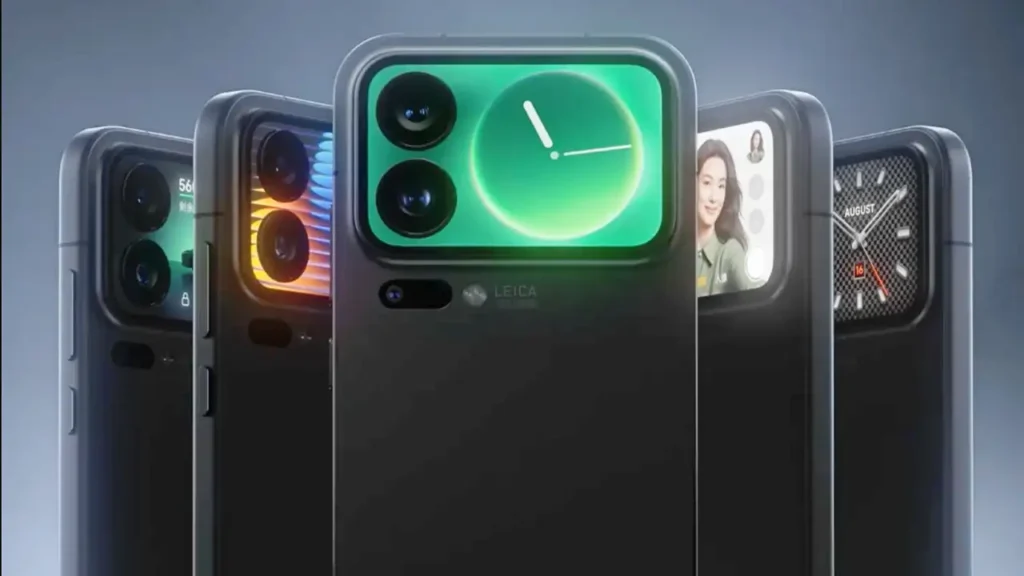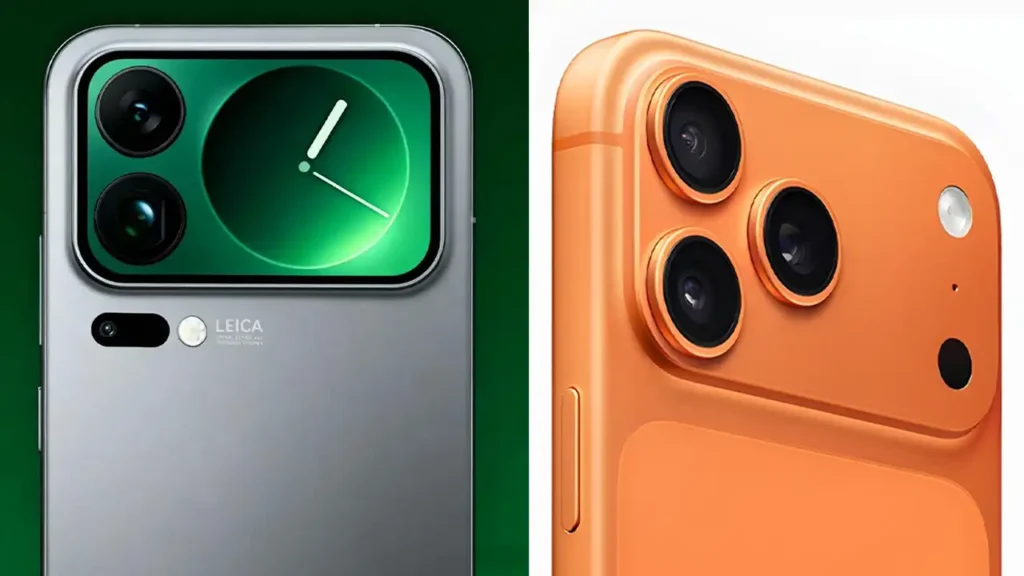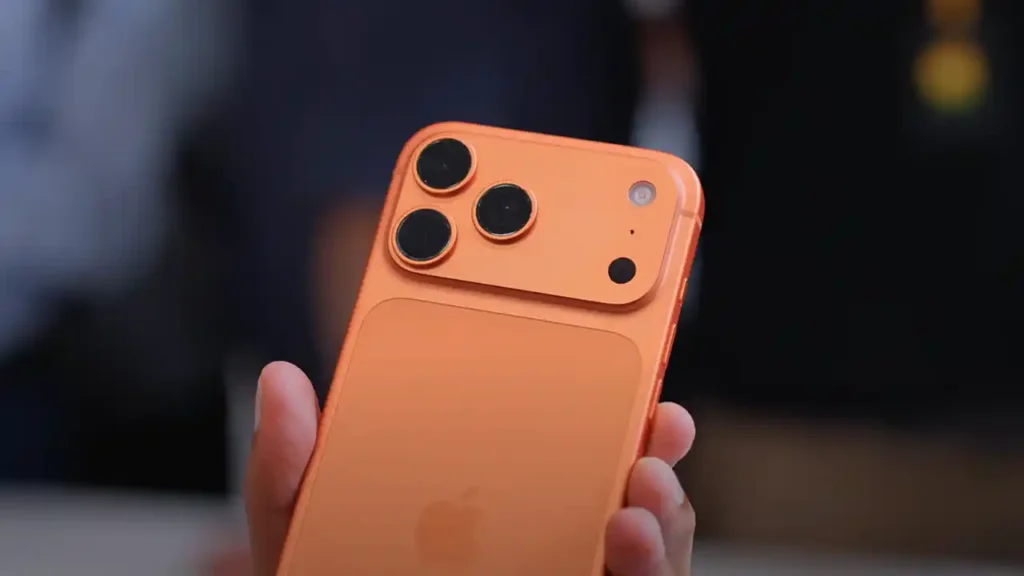ISLAMABAD: Xiaomi is gearing up to shake the smartphone market with its upcoming Xiaomi 17 series, and the hype is already building. The Chinese tech giant has confirmed that it will unveil the Xiaomi 17 lineup on September 26 in China, with the launch in Pakistan expected to follow soon after.
This time, Xiaomi seems to be aiming straight at Apple’s premium flagship space, especially the newly launched iPhone 17 Pro Max. With its bold redesign, powerful specs, and headline-grabbing “Magic Back Screen”, the Xiaomi 17 Pro Max is already sparking debates among tech enthusiasts: could it actually threaten Apple’s dominance?
Skipping Xiaomi 16 to take on iPhone 17
In a surprising move, Xiaomi has decided to skip the “16” branding entirely, jumping straight from the Xiaomi 15 series to the Xiaomi 17. It is a symbolic step that signals Xiaomi’s intention to go head-to-head with Apple’s iPhone 17 series rather than slowly inch forward. The lineup includes three models, the base Xiaomi 17, the Xiaomi 17 Pro, and the top-end Xiaomi 17 Pro Max.
Company president Lu Weibing has already called the standard Xiaomi 17 a “flagship without a price increase”, suggesting that while it will receive hardware upgrades, it will not be as expensive as the Pro models. Interestingly, Xiaomi has also confirmed that a Xiaomi 17 Ultra is in development but will not arrive until 2026.
Magic back screen: Xiaomi’s risky bet
The standout design change this year is undoubtedly the new Magic Back Screen, a functional secondary display built directly into the rear camera module of both the Xiaomi 17 Pro and 17 Pro Max. This isn’t a small notification panel like the one on the old Mi 11 Ultra from 2021. Instead, it stretches across the camera island and wraps around two of the lenses, making it look futuristic and unlike anything else in the current flagship market.

Xiaomi says this rear screen will show time, notifications, and watch faces, and it can even work as a camera viewfinder for selfies with the rear cameras. It could also handle multitasking, AI-based interactions, and cross-device functions, though full details will likely be revealed at the launch event.
This is where Xiaomi clearly wants to stand out from Apple. The iPhone 17 Pro Max sticks to its traditional rear camera design, while the Xiaomi 17 Pro Max is trying to introduce something new and eye-catching.
Hardware muscle: Snapdragon 8 Elite Gen 5 and big batteries
Under the hood, all three Xiaomi 17 models will be powered by Qualcomm’s latest Snapdragon 8 Elite Gen 5 chipset. The base Xiaomi 17 will have a 6.3-inch AMOLED screen with a 1.5K resolution, ultra-thin bezels, and a massive 7,000mAh battery.
The Xiaomi 17 Pro steps up with a 6.3-inch AMOLED display, 1.5K resolution, 1–120Hz adaptive refresh rate, and a 6,300mAh battery with 100W wired and 50W wireless charging support.
The crown jewel, the Xiaomi 17 Pro Max, will feature a 6.8-inch 2K AMOLED display with a 94 percent screen-to-body ratio and an enormous 7,500mAh battery. That’s far larger than the typical iPhone battery, which may appeal to power users.
Leica cameras with flagship features
The new Xiaomi 17 series continues the company’s partnership with Leica, with the branding clearly visible on the rear. The Xiaomi 17 Pro Max is tipped to carry a 50MP Smart Sense 590 main sensor, a 50MP ultra-wide, and a 50MP periscope telephoto lens with macro support. The camera island also includes an LED flash and the secondary display.
All three models are expected to offer a 50MP autofocus selfie camera. While Apple’s iPhones are well known for their reliable and colour-accurate cameras, Xiaomi is hoping its Leica collaboration will give it a competitive edge on the photography front.
Inspired by rivals, but copying Apple?
Tech watchers have pointed out that the new design appears to borrow elements from Apple’s iPhone 17 Pro and even foldables like Samsung’s Galaxy Z Flip 7 and Motorola Razr. The rear camera setup seems to “float” above the back panel, and the secondary screen concept is something more commonly seen on foldable phones.


This has fuelled online debates about whether Xiaomi is copying Apple again. Some say the side profile, edges, and overall silhouette look similar to the iPhone 17 Pro Max. Dilawar Javed, a motion graphics specialist, said the Xiaomi 17 Pro Max “does look a bit like the iPhone from the side and around the camera bump.”
However, others disagree. Another iPhone user Abdur Razzaq said the design “is nowhere like the iPhone 17 Pro Max”, arguing that the back screen alone makes it stand out. He pointed out that if the leaks are accurate, “it’s actually something new, and not a copy at all.”
It’s worth noting that Xiaomi has often been accused of copying Apple’s interface elements, such as iOS-like lock screens and notification panels, so comparisons were always likely.
Pricing and the Pakistani market
Xiaomi has not yet revealed official prices for the Xiaomi 17 series. The Xiaomi 15 Pro Max currently sells for around $1,421 (roughly Rs460,000), so the upcoming Xiaomi 17 Pro Max could be even more expensive.
In Pakistan, Xiaomi smartphones are usually available through local importers and authorised retailers, though not always in large numbers. Some high-end Xiaomi and Redmi phones are sold as PTA-approved and duty-paid, similar to how iPhones are imported and sold by Apple distributors.
Xiaomi’s premium models have already touched prices of around Rs400,000 in Pakistan. Given that, the 17 Pro Max could become one of the most expensive Android phones in the country when it arrives.
However, market response is uncertain. Many Pakistani buyers still see Xiaomi and Redmi as budget-friendly brands, while people spending more than Rs300,000 often prefer Apple or Samsung.
Hamza Ali Zahir, an iPhone user from Islamabad, said he would not spend over Rs100,000 on a Xiaomi or Redmi phone. “People call it an iPhone killer, but Apple has strong brand loyalty. People pay more not just for performance but for the experience, speed, camera quality, and that sense of luxury that comes with an iPhone,” he said.
Aiming high, but can it dethrone Apple?
With its powerful specs, futuristic design, and a bold new name, Xiaomi is clearly trying to break into Apple’s territory. The Magic Back Screen could become the next big trend in smartphones, or it could turn out to be a gimmick. Either way, it shows Xiaomi is willing to take risks to stand out.


Whether the Xiaomi 17 Pro Max can truly rival the iPhone 17 Pro Max remains to be seen. Apple’s fan base is fiercely loyal, and its ecosystem keeps users locked in. But for those seeking cutting-edge features, massive battery life, and something visually fresh, Xiaomi’s latest flagship might just be worth the gamble.
For now, all eyes are on September 26, when the Xiaomi 17 series will finally step into the spotlight, and possibly start a new chapter in the battle of premium smartphones.

